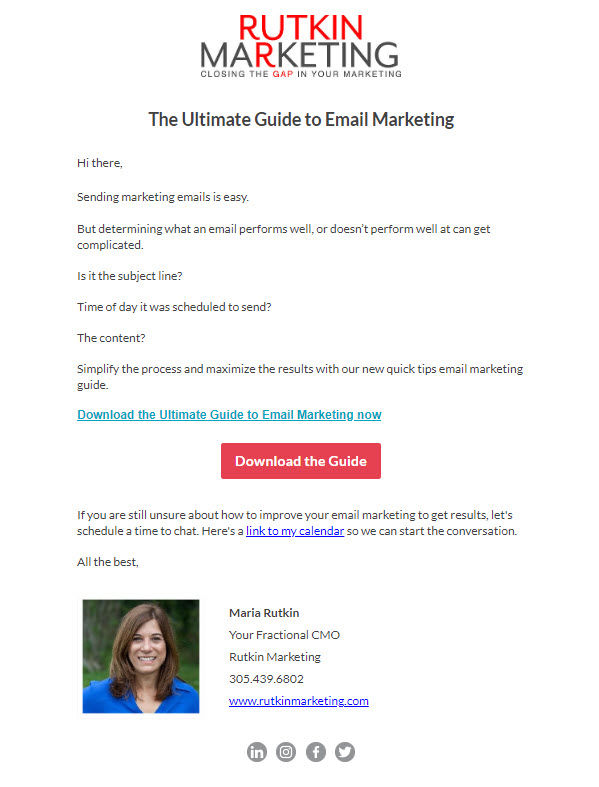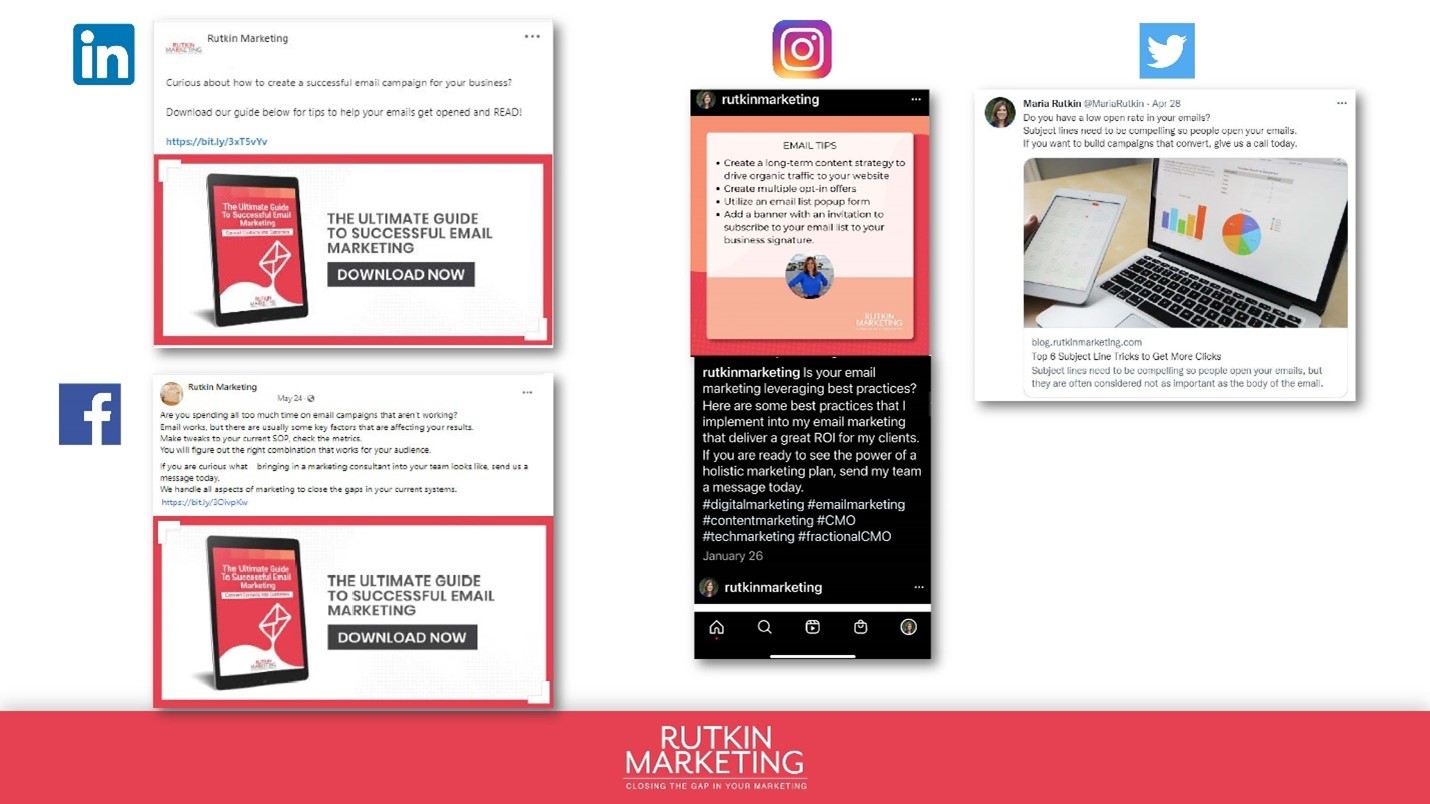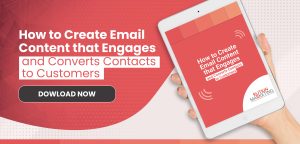Writing is an art. Writing content for an email that engages and converts contacts to customers is in a class by itself. It’s not just writing the content. It’s writing content people will read and want to keep on reading. An email needs to be short and grab the reader in the subject line. The content needs to be engaging. It needs to entice them to respond to the call to action and interest them enough to open your next email…and then convert them from contacts to customers and keep buying your product or service.
It’s a tall order.
My goal is to offer you the short order version, a strategic step-by-step guide to developing content that is king based on the three M’s of marketing: Market, Message, and Media.
The 3 M’s of Marketing
#1: The Market – Defining the market is always first
The first step in strategically creating content for your email is to identify your target audience, your market. Your market is your potential buyers, the ones who could benefit the most from your products or services or those who have used your product or service previously. To create your target market, consider the demographics and attributes, the statistical data, that clearly defines your audience such as:
- age range
- gender
- geographical location
- income
- level of education
- ethnicity
- job title, role, and/or function
- company type
- company size
- industry
Often, there is more than one group in your target audience. Sometimes the difference can be the job position, industry, or size of organization. For example, I am currently working with a cybersecurity and compliance company that services different verticals such as healthcare, government, and education. Some emails I draft for this client are directed to the C-level executives; others are to the managers or directors in IT, security, and compliance. Some are to all three verticals and some emails are unique to just one.
The key is to keep that differentiation in mind when segmenting your target lists.
With clearly defined demographics and attributes, you can then determine your target population’s needs and wants and craft your message to explain how your product or service will solve their pains and address their issues and concerns.
#2: The Message – Crafting your message for maximum impact
Once you have identified the market, the next step is to draft the right message to convert contacts to customers.
Grab the reader’s attention: It’s all about story telling. Start with a compelling lead-in so you grab the reader’s attention right at the beginning and keep them engaged.
Align the subject with the email content: Make sure your subject line aligns with the content of your email. While writing an eye-catching subject line is a great way to increase your open rate, if it does not match your copy, it can appear like a bait and switch and ruin your reputation.
Write in second person: Using the pronoun YOU makes your email so much more personalized. Why? It forces the writer to focus on the end user instead of on ourselves and promotes a greater connection with the reader.
Show how you understand their pain points: What some people refer to as needs and wants, I call pain points, aka what keeps your current and potential clients up at night. The pain point process allows you to segment your email so the right message goes to the right person.
I find phrasing the pain point in the form of a question to be one of the most effective ways to let your market know you understand their needs and wants.
Here are some examples:
- Do you have low open and click rates?
- Are poorly written emails stopping your sales team from reaching prospects?
- Which email platform is best for your business?
- Are you ready to increase your revenue by 60%?
Provide a solution: The message should demonstrate that you not only understand their pain points but also have access to the solution. The solution could be just information like offering a downloadable eBook or white paper or a specific service that you offer so they can identify their problem and evaluate the options available to help solve their challenges while you share your area of expertise.
Keep it short: Keep your emails long enough to engage the reader but short enough not to lose them. It is always a balancing act to figure out exactly how long your email should be. I am a big believer in super short paragraphs since our eyes glaze over with bulky paragraphs.
At the same time, you want to give your reader enough information to click your Call to Action (CTA) or at least open your next email.
Speaking of a CTA, research shows that adding the CTA as a button rather than a hyperlink increases your click-through rate.
Here is an example:
Download the Ebook
Balance the features with the benefits: When you outline your solution to the problem, include the features of the solution as well as the benefits. There is a natural tendency to assume that our audience will intuitively understand the benefit once we outline the feature, but that assumption could be false.
Here’s an example:
- Feature: Rutkin Marketing offers both blog writing and email marketing services.
- Benefit: It is time and cost effective to combine both services to generate leads and improve conversion.
- Change the message based on the target segment: The message should change based on the buyer segment to whom you are emailing.
- Avoid spamming: Schedule emails only when you have something your reader would be interested in hearing. Spam is a big no-no in this business and can increase a number of potential clients to unsubscribe.
#3: The Medium – Choosing the right medium (channel) for the message
In marketing, it is critical to identify which medium, aka channel, is the best way to distribute the message. According to Marshall McLuhan, the form of the message determines our perception.
Obviously, we are focusing here on the merits of email marketing and how effective email can be once you have identified the market and crafted the message.
But what if you could repurpose the same information in a different medium? What if we could take this blog and repurpose the content in the form of email, social media, webinar, podcast, etc.? Wouldn’t that be time and cost effective?
The synergy between the different medium is the secret sauce of digital communication to improve results. Here is the perfect example:
I recently wrote an eBook onThe Ultimate Guide to Successful Email Marketing.
Have you downloaded it yet?

I posted the eBook (www.rutkinmarketing.com) to the top of the home page on my website, and emailed sections of the eBook to my current contact list offering a downloadable version.
Here is an example of the email.

To reach a wider audience, I created a variety of posts for social media. Notice the post is slightly different based on whether I am using Facebook, Instagram, Twitter, or LinkedIn as I tailor each post to a different medium, with the hope of engaging and capturing new leads in my target audience.
Here are some examples:

I am also in the process of taking each topic from the book and creating individual blogs which I am posting to my website and promoting through social media, emails, and a webinar. Not everyone wants to download an eBook. Some prefer shorter, more topic-focused blogs or watching a webinar.
My ultimate goal is to host a webinar which will focus on How to Create Killer Email Content to Engage and Convert Contacts into Customers. Webinars generally appeal to the visual and attract more engaged audience members.
Interested in attending my webinar? Click on the register button below to get on the waitlist to be instantly notified when my webinar registration goes live.
Register to be added to the Email Marketing Webinar list
Need help creating content for your email marketing strategy to convert contacts to customers?
We are email marketing experts. From drafting the perfect subject line to creating content that engages your readers and converts them to leads and customers, we can help you take your email marketing to the next level and synchronize the message in other forms of media as well. Another helpful tip: the CTA button works great to convert leads from blogs as well as emails.
Are you frustrated with the lack of results you are seeing with your marketing efforts? Get advice on how to boost your professional brand and follow best practice email marketing tips to get more engagement and results.
Claim Your Free Email Assessment





